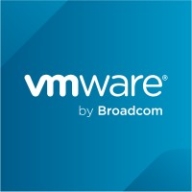

Pivotal Cloud Foundry and Azure Red Hat OpenShift are competing platforms in the enterprise-grade cloud application sector. Azure Red Hat OpenShift generally has the upper hand due to its expansive feature set, despite its higher costs.
Features: Pivotal Cloud Foundry features automation, lifecycle management, and easy deployment, enhancing performance and CI/CD integration. Azure Red Hat OpenShift excels in language support, container orchestration, and scalability, providing robust tools for cloud-native application deployment.
Room for Improvement: Pivotal Cloud Foundry could benefit from broader language support, improved container orchestration, and enhanced scalability features. Azure Red Hat OpenShift could reduce complexity in initial setup, lower costs, and further streamline its comprehensive deployment model.
Ease of Deployment and Customer Service: Pivotal Cloud Foundry provides streamlined deployments with fast time-to-market and self-assisted features. Azure Red Hat OpenShift offers flexible deployment models with enhanced scalability and detailed documentation, backed by robust support from Red Hat and Microsoft.
Pricing and ROI: Pivotal Cloud Foundry's simple pricing can lead to a faster ROI. Azure Red Hat OpenShift, though more expensive initially, offers long-term benefits and adaptable solutions that may result in significant ROI.
| Product | Market Share (%) |
|---|---|
| Pivotal Cloud Foundry | 8.9% |
| Azure Red Hat OpenShift | 0.7% |
| Other | 90.4% |


| Company Size | Count |
|---|---|
| Small Business | 1 |
| Midsize Enterprise | 3 |
| Large Enterprise | 7 |
| Company Size | Count |
|---|---|
| Small Business | 5 |
| Large Enterprise | 11 |
Azure Red Hat OpenShift provides highly available, fully managed OpenShift clusters on demand, monitored and operated jointly by Microsoft and Red Hat. Kubernetes is at the core of Red Hat OpenShift. OpenShift brings added-value features to complement Kubernetes, making it a turnkey container platform as a service (PaaS) with a significantly improved developer and operator experience.
Pivotal Cloud Foundry (PCF) is the leading enterprise PaaS, powered by Cloud Foundry. PCF provides a cloud-native application platform that allows you to continuously deliver any app to every major private and public cloud with a single platform. PCF is proven to accelerate feature delivery with higher developer productivity and a 200:1 developer to operator ratio. PCF's built-in security and self-healing capabilities reduce risk in your app portfolio while maintaining high-availability at scale to keep customer facing systems online even in the most challenging circumstances. pivotal.io
We monitor all PaaS Clouds reviews to prevent fraudulent reviews and keep review quality high. We do not post reviews by company employees or direct competitors. We validate each review for authenticity via cross-reference with LinkedIn, and personal follow-up with the reviewer when necessary.